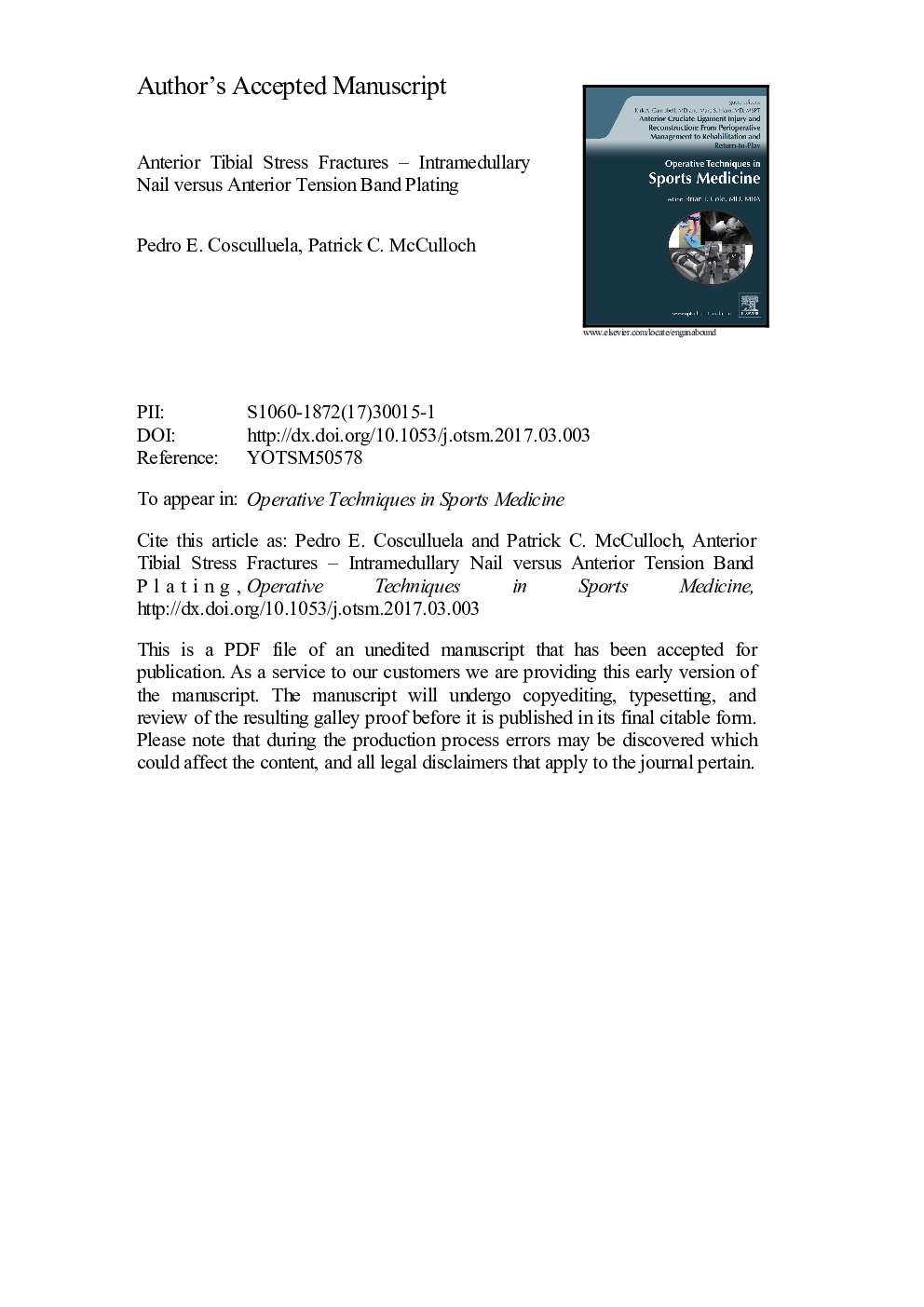| Article ID | Journal | Published Year | Pages | File Type |
|---|---|---|---|---|
| 5710948 | Operative Techniques in Sports Medicine | 2017 | 27 Pages |
Abstract
Lower extremity stress fractures are common overuse injuries in endurance athletes. Most fractures are low risk and respond well to nonsurgical management involving rest, activity modification, and slow resumption of activities after symptom resolution. However, some high-risk fractures or nonunions warrant surgical intervention to prevent fracture completion and continued symptoms. Anterior stress fractures of the tibial shaft are tension-sided high-risk stress fractures with significant risks of delayed union, nonunion, and fracture propagation. The gold standard surgical treatment has traditionally been antegrade tibial intramedullary nailing. However, the risk of anterior knee pain following intramedullary nail placement has prompted clinicians to seek alternative methods of fixation. Anterior tibial plating with biological augmentation is biomechanically sound in that the plate is placed on the tension side, able to resist tensile stress, and biologically sound in that bone graft may be used to enhance fracture healing. The purpose of this article is to describe the presentation, evaluation, and management of patients with anterior tibial shaft stress fracture. The surgical techniques for intramedullary nail and anterior plating are discussed and illustrated in detail.
Related Topics
Health Sciences
Medicine and Dentistry
Orthopedics, Sports Medicine and Rehabilitation
Authors
Pedro E. MD, Patrick C. MD,
